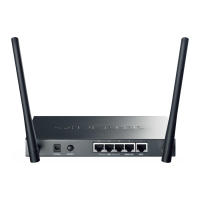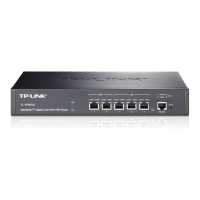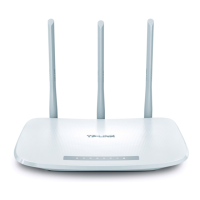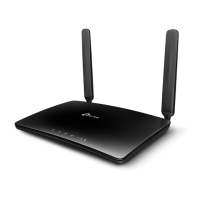Virtual Server
Name:
Enter a name for Virtual Server entries. Up to 28 characters can be
entered.
External Port:
Enter the service port or port range the router provided for accessing
external network. All the requests from Internet to this service port or
port range will be redirected to the specified server in local network.
Internal Port:
Specify the service port of the LAN host as virtual server.
Protocol:
Specify the protocol used for the entry.
Internal Server IP:
Enter the IP address of the specified internal server for the entry. All
the requests from the Internet
redirected to this host.
Status:
Activate or inactivate the entry.
Note:
● The External port and Internal Port should be set in the range of 1-65535.
● The external ports of different entries should be different, whereas the internal ports can be the
same.
List of Rules
In this table, you can view the information of the entries and edit them by the Action buttons.
The first entry in Figure 3-32 indicates: This is a Virtual Server entry named host1, all the TCP
data packets from Internet to port 65534-65535 of the router will be redirected to the port
65534-65535 of the LAN host with IP address of 192.168.0.103, and this entry is activated.
3.3.1.5 Port Triggering
Some applications require multiple connections, such as Internet games, video conferencing, Internet
calling, P2P download and so on. Port Triggering is used for those applications requiring multiple
connections.
When an application initiates a connection to the trigger port, all the ports corresponding to the
incoming port will open for follow-up connections.
Choose the menu Advanced→NAT→Port Triggering to load the following page.
-49-
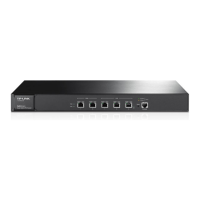
